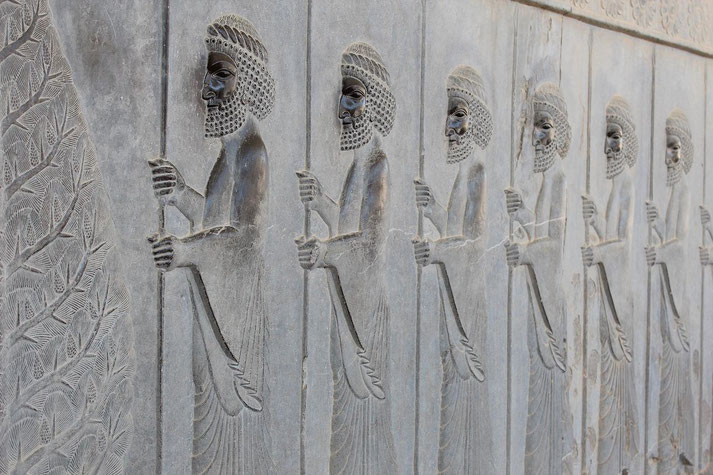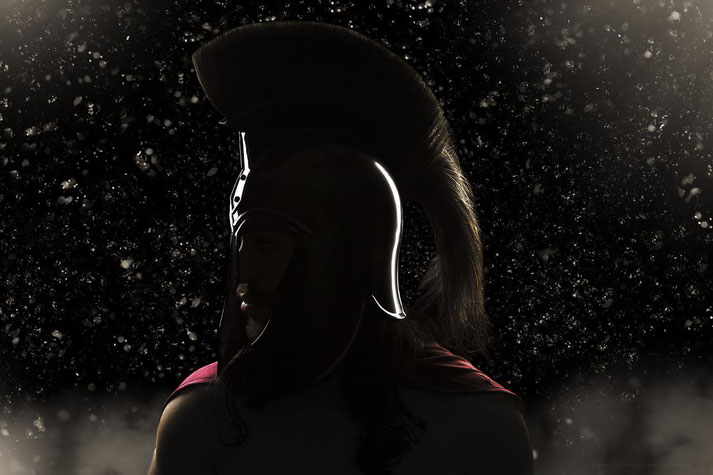The Greeks' finest hour: How the battles of Plataea and Mycale saved ancient Greece

The battles of Plataea and Mycale were pivotal moments in ancient Greek history. In 479 BC, these two battles turned the tide against the Persian Empire's invasion.
At the time, the Persian Empire stretched from modern-day Turkey to India, threatening the very existence of Greek civilization.
Following earlier conflicts, such as the battles of Thermopylae and Salamis, the Greeks united against a common enemy.
These decisive victories not only ended Persian ambitions in Greece but also ensured the survival and future prosperity of Greek culture.
What had started the Greco-Persian Wars?
The Persian Empire was, at its height, the largest empire in the world. It stretched from Asia Minor to modern-day Pakistan, and its influence was felt throughout the known world.
The Persians were a proud and powerful people, and their king, Xerxes I, was determined to add Greece to his empire.
In order to do this, he assembled a massive army and navy and set out to conquer Greece.
However, the Greeks were divided on how to respond to this threat; some wanted to fight, while others wanted to surrender.
Ultimately, it was decided that they would defend their homelands, and so the Greeks gathered their own armies and navies and prepared for war.
In 480 BC, the Persian army, led by Xerxes, had their first clash with the Greeks at Thermopylae.
Led by the Spartan king Leonidas, the Greeks fought bravely but were outnumbered and outmatched by the Persians.
As a result, the Persians won the battle, and Leonidas was killed. The Greeks retreated and regrouped on the island of Salamis.
The Greek fleet, under the command of the Spartan general, Eurybiades, met the Persian navy in battle in the straits off the coast of Salamis.
In this conflict, the Persian navy was much larger than the Greek one, but the Greeks were able to lure the Persian ships into narrow waters where they could not use their numbers to their advantage.
In the ensuing battle, the Greeks destroyed much of the Persian fleet and Xerxes fled back to Asia.
What were the causes of the Battle of Plataea?
Following Xerxes' departure, Mardonius, one of his generals, remained in Thessaly with a large army.
Despite the loss at sea, the Persian position was still strong - they still ruled sizeable portions of Greece and their huge land army remained intact.
If appropriate diplomatic attempts were made, Xerxes may well have hoped that the fragile Greek alliance between such age-old foes as Athens and Sparta would fall apart.
However, after a series of political discussions it became clear that the Persians would not win victory through diplomacy.
In response, Mardonius marched his army into central Greece and ravaged the countryside, burning crops and villages as he went.
The Greeks were horrified by this destruction and decided to take action. They formed an alliance of city-states known as the Hellenic League and gathered an army to face Mardonius.
Battle preparations for Plataea
The two armies met at Plataea in Boeotia in 479 BC. According to Herodotus, the Persian army was comprised of 350,000 soldiers in battle with the Greek forces of 110,000.
However, most modern scholars question these figures.
Regardless of the exact numbers, the Persian forces were comprised of units from all across their vast empire: from India, Mesopotamia, Asia Minor, and even some Greek cities that had allied with them.
Most of their army were infantry, but they also had around 5,000 cavalry men.
On the other side, the Greek army was led by Pausanias, the nephew of King Leonidas who had perished at Thermopylae.
Pausanias was also the regent of Leonidas' son, Pleistarchus. The Greek forces were made up from a coalition of Greek city-states, including Athens (led by Aristides), Sparta, Corinth, and more.
Importantly, the Greeks had no cavalry to counter the significant number of horsemen presented by the Persians, which put them at a significant disadvantage.
Battle tactics for Plataea
The two opposing forces approached the battle with two different tactics. The Persians favoured long-range archery attacks followed by a cavalry charge, while Greek focused on heavily armored hoplites, with each soldier carrying a huge round bronze shield and using spears and swords.
In a purely infantry verse infantry engagement, the Persians were at a disadvantage.
The Persian forces did have some heavy infantry to counter the Greeks. In particular, they had a group known as 'the Immortals', who were an elite force who were probably better protected with armor and wielded spears.
Also, they had several thousand hoplites from their Greek allies, notably the Thebans.
For the Persians, their overwhelming superiority in cavalry was their best chance at victory.
Although, the horses needed wide, flat terrain to be most effective in combat.
Unfortunately, the broken, hilly terrain chosen by the Greek forces, nullified this advantage.
What happened at the Battle of Plataea?
In July, the Spartan army advanced to Plataea, where it met up with the other Greek forces.
They then moved into position and formed a 7-kilometer-long front, which was only 3-4 kilometers from the Persians.
In comparison, the Persians had taken up position on the plain, which was ideal ground for their cavalry.
The Persians stood their ground on the other side of Asopas River, hoping that the Greeks would advance onto the open plain.
The Greeks, meanwhile, entrenched themselves in a rocky region near the hills.
They knew that to leave the safety of the uneven ground and onto the plateau would certainly mean a defeat for them.
So, they resolved to stay in the hilly area and wait for the Persians to make the first move.
Clearly, the Greeks hoped that they could wait out the Persians, since they were in their homeland, while the Persians had to rely upon long supply trains to feed their men.
By early August, after two days of stand-off when each side clung to its preferred terrain, Mardonius ordered his cavalry to attack the Athenian hoplites, which began the battle.
The Athenians fought hard, and the presence of their own archers swung the combat in their favour.
The Persian cavalry commander was killed, and the rest of the horsemen withdrew.
The Greek army then moved north, onto the Pyrgos ridge, to gain better access to fresh water, yet Mardonius made no move.
Both sides remained in position for another week or so, hesitant to abandon their advantageous positions.
Then, Mardonius used his cavalry units to attack an exposed supply train to the Athenian camp, which caused huge numbers of causalities.
Two days later, the cavalry once more attacked the Greek line, where they captured the Gargaphia freshwater spring.
This was the Greeks' main source of water, and the Persians destroyed it before retreating back to the rest of their army.
The Spartan commander, Pausanias, tried to reposition his army under the cover of night to reach a new water supply.
To do so, he moved the centre of the Greek army back to Cithaeron hill. However, there must have been a breakdown in communication because, at dawn, the left flank of the Greek army, which contained the Athenians, had not retreated as ordered and were left isolated.
Seeing the exposed Greek left flank, Mardonius though it was an opportunity too good to miss.
He ordered his Greek allied soldiers, from Thebes and Boeotia, to cross the Asopus River in large numbers and attack the Athenians from multiple sides.

The Persians seemed like they were guaranteed victory. Seeing the precarious situation, Pausanias ordered the Spartans and Tegeans to charge the Persians in a counterattack.
Caught between the Athenians and the charging Spartans, the Persian forces were trapped and 'boxed in' on both sides.
Order quickly broke down among the Persians and their troops began to flee.
The momentum quickly swung in the Greek's favour and the Persian forces began to retreat.
Mardonius, the Persian commander, was even killed by a rock thrown at his head by a Greek soldier.
Aftermath of Plataea
The Greek victory at Plataea was one of the most important events in the Greco-Persian War.
It resulted in heavy casualties for the Persians, with estimates suggesting around 40,000 Persian soldiers killed, while Greek losses were significantly lower, around 10,000.
Not only did it put an end to Xerxes' invasion, but it also broke the back of the Persian Empire's military control of the region.
Xerxes ordered his remaining troops to leave Greece and retreat back to Asia Minor.
While the Persians still had a large army, they no longer had the same level of confidence.
The Greeks, on the other hand, were buoyed by their success.
A commemorative pillar was erected at Delphi to memorialise the victory. It was a bronze column, in the shape of a three-headed serpent.
On it was inscribed the names of the 31 Greek cities that participated in the battles of Salamis and Plataea.
Following the expulsion of the Persians from Greece, an alliance was formed between many of the separate city-states in 478 BC, known as the Delian League.
This league was formed for the purpose of expelling the Persians from the Aegean region and protecting Greece from future invasions.
The Battle of Mycale
Around the same time as the Battle of Plataea (or even on the same day, according to Herodotus), another battle saw the Greeks defeat the Persians: this time at Mycale.
This battle was fought near Mount Mycale on the Ionian coast (in modern-day Turkey).
The Persian fleet had been anchored in the Bay of Mycale, near the Ionian Greek city of Samos, since their failed invasion attempt of Greece the year before.
The fleet was badly in need of repairs and supplies and were not ready to participate further in conflict.
Men from Samos travelled to Greece and explained the weak position the Persian fleet was in.
The Samians suggested that if a Greek fleet appeared in the region, it would encourage the Ionian Greek cities to revolt once more against Persia.
The Spartan king, Leotychides, led the Greek fleet. When they arrived at Mycale, they discovered that the Persians had beached their ships and had retreated to defensive positions inland with their Ionian Greek allies.
So, the Greeks disembarked from their own ships and approached the Persian lines.
Leotychides announced to the Ionians in the Persian forces that if they changed sides, they would be guaranteed freedom for their home cities.
As a result, the Ionian Greeks defected and attacked the Persians.
Then, the combined Greek forces, including Spartans and Athenians, defeated the Persian garrison, burnt the remaining Persian ships, and killed the Persian commander, Tigranes.
The Battle of Mycale was a resounding victory for the Greeks. Not only did they destroy the Persian fleet, but they also killed thousands of Persian soldiers in the process.
Ultimately, this victory disrupted Persia's control of parts of Asia Minor.
Significance
The battles of Plataea and Mycale were two of the most important in ancient Greek history.
These two battles are considered to be the end of the Greco-Persian Wars. Never again would a Persian king aim to conquer Greece through military means.
Instead, Persia used their vast wealth to bribe different city-states into fighting against other Greeks.
By this means, the Persians hoped to destabilize the region.
Further reading
What do you need help with?
Download ready-to-use digital learning resources
Copyright © History Skills 2014-2025.
Contact via email
With the exception of links to external sites, some historical sources and extracts from specific publications, all content on this website is copyrighted by History Skills. This content may not be copied, republished or redistributed without written permission from the website creator. Please use the Contact page to obtain relevant permission.







